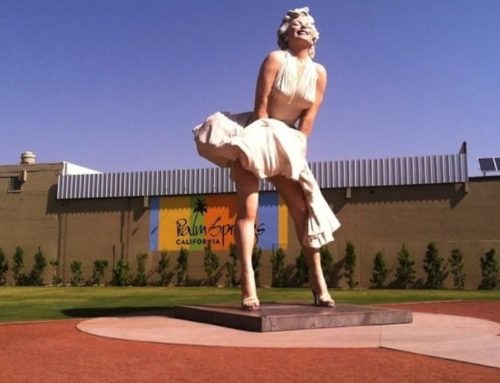The Trump Administration released a draft of its 2019 budget Monday and, if adopted, it would eliminate the National Endowment for the Arts and the National Endowment for the Humanities, both of which award grants to arts institutions nationwide. The proposed $4.4 trillion budget would also shutter the Corporation for Public Broadcasting. Last year the administration put forth similar cuts, but the House did not adopt them, and Jane Chu, an Obama nominee, continues to serve as chair of the NEA.
The budget would cut the NEA budget from about $150 million to $29 million, enough to wind down the agency’s operations. “The Budget proposes to begin shutting down the NEA in 2019, given the notable funding support provided by private and other public sources and because the Administration does not consider NEA activities to be core Federal responsibilities,” the White House budget proposal says.
“The Coachella Valley has to step up, safeguard, promote, and grow its cultural assets,” says Christi Salamone, president and CEO of the nonprofit California Desert Arts Council. “This requires leaders in business, tourism, education, and public office to work together to support the arts with fervor and determination.”
Locally, NEA grants have supported education programs by Palm Springs International Film Society and exhibitions at Palm Springs Art Museum, according to a Desert Sun report last year. A NEA grant also funded a recent study into the feasibility of an open-air amphitheater and festival venue near the Cathedral City Civic Center. Meanwhile, the Hi-Desert Cultural Center in Joshua Tree won a $10,000 NEA grant to support its summer theater, music, and arts education programs for underserved K-12 students.
“We are disappointed because we see our funding actively making a difference with individuals in thousands of communities and in every Congressional district in the nation,” NEA Chairman Jane Chu said Monday in a prepared statement.
Robert Lynch, CEO of Americans for the Arts, said in a statement that he’s “troubled by the short-sightedness” of the administration. “Despite the president’s State of the Union speech proclaiming ‘Americans fill the world with art and music,’ there seems to be a disconnect on the need to invest in our nation’s future support of the arts and arts education. The federal investment in the arts helps power the creative economy across the country,” Lynch said.
In the Coachella Valley, the creative sector generates almost $1 billion in annual economic impact and accounts for about 1 in 5 employed people, according to the Creative California Desert Economic Study completed five years ago.
Salamone says communities like ours must mobilize to support the arts, which fuel our economy, attract tourism, enhance the quality of life, and shape well-rounded, open-minded individuals capable of creative problem solving.
There are many ways to support the transformative power of the arts. First and foremost, engage local artists, galleries and museums, theaters and performing arts centers, and local arts and culture festivals and happenings — and share your experiences on social media to encourage others to do the same.
CDAC also encourages supporters of the arts to urge their U.S. representatives and senators to oppose the president’s proposal and fully fund the NEA. “Arm yourself with facts at the Americans for the Arts Mobilization Center,” Salamone suggests. “And, of course, support the California Desert Arts Council.”
CDAC’s mission is to unify, empower, and promote the arts in the Coachella Valley region through advocacy, business and professional development, cultural tourism and promotion, and education.
Learn more and donate at cadesertarts.org.







